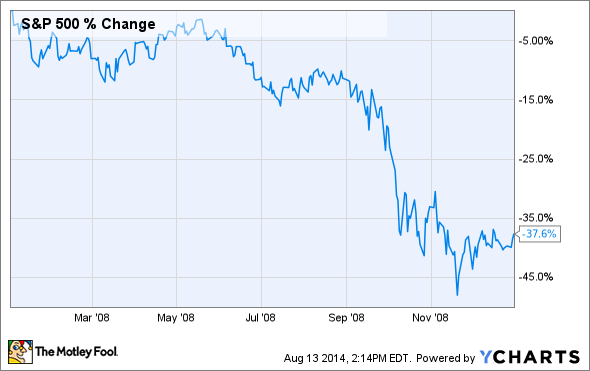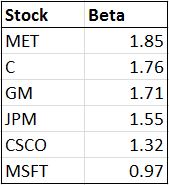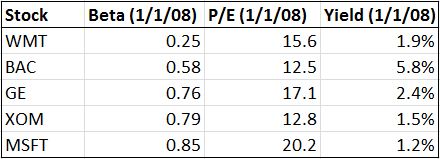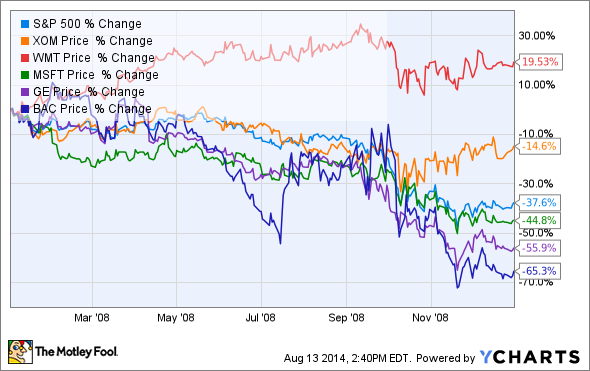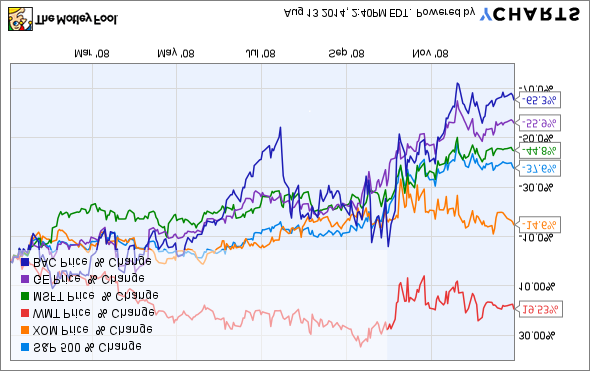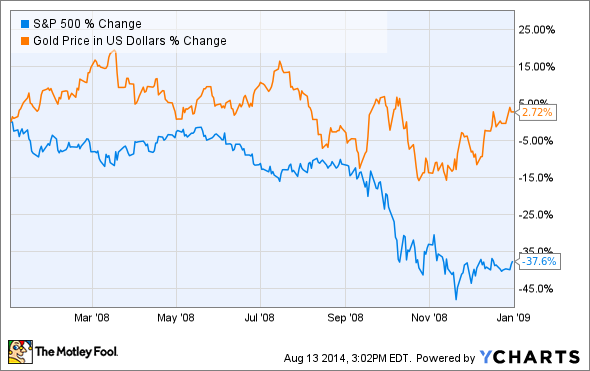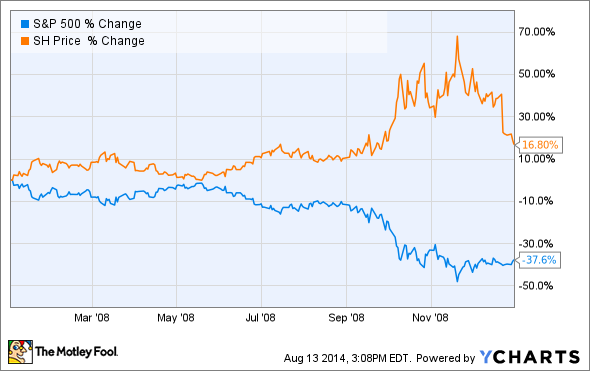To conclude my three part series on volatility (part 1 and part 2 here), I wanted to take a look at exactly how “safe” low-beta stocks are when it comes to market downturns. After all, isn’t the whole point of owning low-beta stocks to reduce risk?
So we’re going to hop in the time machine back to 2008, one of the worst years for the stock market in history. The S&P 500 fell 37.6% that year, and billions of dollars of stock market wealth evaporated into thin air. That is every trader’s worst nightmare and the driving force behind the desire to control portfolio risk.
The motivation behind this week’s posts on volatility was an article I read last week on CNN written by Paul La Monica entitled “How to Stay Safe in a Scary Market.” In the article, La Monica says
So now’s the time… to be looking at blue chip, dividend-paying companies that can hold up well during rocky periods for the broader market.
As I said on Monday, the idea is that, when times get scary (as I have suggested they have become lately), you should build your portfolio around solid, low-volatility, low-risk stocks.
La Monica quotes Branywine Global managing director Patrick Kaser, who specifically mentions some stocks that he deems to be good, safe, long-term investments, including Cisco, Microsoft, GM, JPMorgan Chase, Citigroup, and Metlife.
Here’s a look at the beta of these six blue-chip companies (according to finviz.com):
Kaser cites relatively high dividend yields and relatively low valuations for these companies as reasons for them being “safe” long-term investments. However, from a strictly volatility-minded perspective, Microsoft is the only of the bunch that is less volatile than the overall market.
Regardless, looking at these companies doesn’t do us much good because we can’t see the future. So what I’m going to do today is take a look at some low-volatility stocks from back in January, 2008.
Blasts from the past
Here’s the list of mega-cap stocks that I came up with that might have fit the dividend-paying, reasonably-valued, low-beta description back in January, 2008.
So according to Kaser and La Monica, stocks like these are the “safe” investments during scary times. So let’s see how they did during 2008.
Despite the fact that all five of these companies had a beta under one at the beginning of 2008, three of the five companies performed even worse than the 37% drop in the S&P 500. And as far as safety goes, Walmart was the only one of the five that managed a gain during 2008. The other four companies suffered losses of no less than a 14.6% each. That doesn’t sound too safe to me…
But what’s the alternative?
The most obvious and safest alternative is cash. I don’t have to put up a graph to show that cash majorly outperformed the S&P 500 in 2008. Sometimes a 0% loss is a hell of an accomplishment.
But aside from sitting on the sidelines on top of a pile of cash, is there a better place to put your money in scary times? I recently wrote an article about the best ways to bet on a down market, and I’d like to compare a couple of those alternatives to buying “safe” low-beta stocks.
Put options
First of all, anybody who bought put options on stocks at the beginning of 2008 is probably living on their own private island somewhere now. However, put options are so risky and the timing must be so perfect that unless you are utilizing a specific option-trading strategy, I would not recommend put options as a way to reduce risk in your portfolio.
Shorting individual stocks
It’s easy to see what the result of shorting individual stocks would have been by simply flipping the above graph. In fact…
Yep, there ya go. Perfect.
Anyway, the point is that you could have made some pretty good returns by shorting these stocks, but there is still the risk that you would somehow pick out a handful of Walmarts and end up losing money .
Gold standard?
What about precious metals such as gold? What if you had bought gold in January, 2008?
You would have done OK with gold. You certainly would have missed the 37% drop in stocks, but a 2.7% return isn’t all that great. Considering the risk involved in gold (which can be extremely volatile itself), a measly 2.7% gain may not have been worth the sleepless nights when cash was an easy alternative.
Inverse ETFs
In the conclusion to my article on betting against the market, I threw my support behind inverse ETF’s such as Short S&P 500 ProShares. So how would this investment have performed in 2008?
A 16.8% gain is not too shabby. I’ve previously discussed the reasons why these inverse ETFs aren’t perfect inverses of the markets they mirror, but +16% in a market that tanked 37% is a some major out-performance!
Take this to heart
To wrap up this discussion on risk and volatility, I have several key points I want to make. As Paul La Monica’s article suggests, finding high-yielding mega-cap stocks with low valuations and low volatility is generally a good investment strategy for the long term. But make no mistake about it: these stocks are not safe! Under the right set of circumstances, each and every one of these stocks can tank just as hard or harder than the stock market as a whole. If you believe the market is going to drop and you want to profit from that fall, inverse ETFs are a relatively safe way to go. However, if you are slightly uncomfortable with how expensive stocks have gotten and simply want to ease your mind, you can’t go wrong with cash!
Want to learn the other factors you need to consider when determining the appropriate risk level for you? Or maybe you just want to be able to look sophisticated in front of your coworkers when they ask you what you are reading on your Kindle, and you’d prefer to tell them “Oh, I’m just reading a book about stock market analysis,” rather than the usual “Oh, I’m just looking at pics of my ex-girlfriend on Facebook.” For these reasons and more, check out my book, Beating Wall Street with Common Sense. I don’t have a degree in finance; I have a degree in neuroscience. You don’t have to predict what stocks will do if you can predict what traders will do and be one step ahead of them. I made a 400% return in the stock market over five years using only basic principles of psychology and common sense. Beating Wall Street with Common Sense is now available on Amazon, and tradingcommonsense.com is always available on your local internet!
